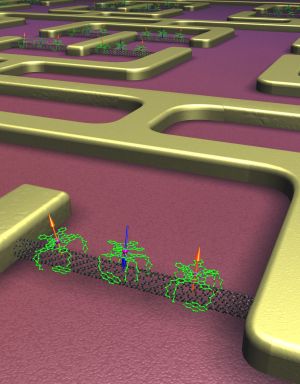June 20, 2011
What if the very tininess of a component prevented one from designing the necessary tools for its manufacture? One possibility could be to “teach” the individual parts to self-assemble into the desired product. For fabrication of an electronic nano-device, a team of INT researchers headed by Mario Ruben adopted a trick from nature: Synthetic adhesives were applied to magnetic molecules in such a way that the latter docked on to the proper positions on a nanotube without any intervention. In nature, green leaves grow through a similar self-organizing process without any impetus from subordinate mechanisms. The adoption of such principles to the manufacture of electronic components is a paradigm shift, a novelty.
The nano-switch was developed by a European team of scientists from Centre National de la Recherche Scientifique (CNRS) in Grenoble, Institut de Physique et Chimie des Matériaux at the University of Strasbourg, and KIT’s INT. It is one of the invention’s particular features that, unlike the conventional electronic components, the new component does not consist of materials such as metals, alloys or oxides but entirely of soft materials such as carbon nanotubes and molecules.

0 comments:
Post a Comment